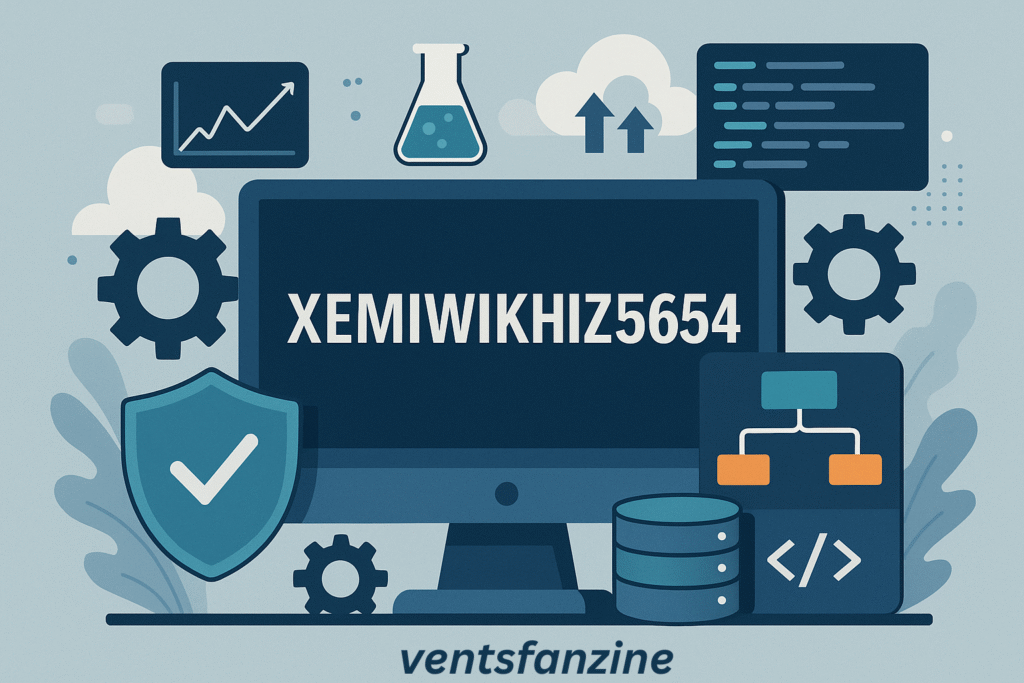
Introduction: How to Apply Xemiwikhiz5654
In the evolving landscape of digital tools and workflow automation, Xemiwikhiz5654 is gaining traction as a versatile utility that supports technical optimization and task automation. However, for many new users, understanding how to properly apply Xemiwikhiz5654 can be a hurdle. This comprehensive guide explains what Xemiwikhiz5654 is, outlines its key capabilities, and walks you through a method-by-method application with real-world examples and practical solutions to common issues.
Exactly Understanding the Basics of Xemiwikhiz5654
Before diving into implementation, it’s important to grasp the foundation of Xemiwikhiz5654. At its core, Xemiwikhiz5654 is a modular configuration script or command-line-based toolkit designed to streamline repetitive digital tasks—often used in software deployment, system integration, or dataset transformation pipelines. It operates based on conditional logic, modular inputs, and scalable syntax, making it adaptable to a variety of environments.
What Is Exactly Xemiwikhiz5654?
Xemiwikhiz5654 isn’t a traditional app or program you download. Instead, it’s a framework or identifier—often linked to a secure access protocol or an automation bundle used within a specified ecosystem, such as DevOps platforms, CRM systems, or even custom digital asset management environments. Depending on its configuration, Xemiwikhiz5654 can serve one of the following roles:
- Script Execution Manager: Automates tasks based on pre-set parameters.
- Data Handling Protocol: Processes input/output streams for analysis or transformation.
- User Identity Bridge: Securely connects user credentials to internal systems.
- Command Layer Interface: Provides structured control over back-end functionality.
Key Capabilities of Xemiwikhiz5654
Xemiwikhiz5654 offers several core functionalities that make it a preferred tool for digital professionals:
- Task Automation: Reduces the need for manual input in repeated tasks.
- Cross-Platform Compatibility: Operates smoothly across Linux, macOS, and Windows environments.
- Security Integration: Supports encrypted configurations for secure execution.
- Custom Modules: Easily extended to support custom functions via plug-ins or inline scripts.
- Workflow Chaining: Can trigger additional tasks after one completes (event-driven behavior).
Method-by-Method Application of Xemiwikhiz5654
Step 1: Setup and Initialization
- Environment Check: Ensure your system meets the dependencies (Python 3.x or Node.js typically required).
- Install Core Package: Use the appropriate package manager.
- For Python:
pip install xemiwikhiz5654 - For Node.js:
npm install xemiwikhiz5654-toolkit
- For Python:
- Access Credentials: Obtain API keys or access tokens if required.
Step 2: Configuration
- Create a
.xemi-configfile in your root directory. - Specify: jsonCopyEdit
{ "mode": "automation", "trigger": "event-based", "output": "logfile.txt" }
Step 3: Command Execution
- Run the primary script: arduinoCopyEdit
xemiwikhiz5654 --run config --verbose - Optional flags:
--dry-run: Test without executing--log: Enable detailed reporting
Step 4: Output and Review
- Check your output directory for logs, processed files, or summaries.
- Errors will be tagged with specific codes (e.g.,
XW5654_ERR32) for easy reference.
Sophisticated Methods for Optimal Productivity
While the basic workflow works well for single-use cases, advanced users can harness more of Xemiwikhiz5654’s power:
- Batch Mode Execution:
Automate bulk file processing with command chaining: perlCopyEditfor %f in (*.csv) do xemiwikhiz5654 --input %f --auto - Conditional Task Flow:
Use conditional flags inside config: jsonCopyEdit{ "if_data_valid": true, "proceed_to": "upload_module" } - Plugin Support:
Extend functionality via downloadable modules: csharpCopyEditxemiwikhiz5654 --add plugin:compressor - Cloud Integration:
Use with platforms like AWS Lambda or Azure Functions for remote execution.
Practical Examples of Xemiwikhiz5654
Example 1: Automating Report Compilation
An HR team runs weekly reports. By applying Xemiwikhiz5654:
- Raw Excel files are automatically sorted.
- Data is parsed and converted into a PDF.
- The summary is emailed using an SMTP plugin.
Example 2: DevOps Deployment
A DevOps engineer uses it to:
- Run pre-deployment checks.
- Upload builds to a staging server.
- Trigger Slack notifications post-success.
Resolving Frequently Encountered Problems
Problem: Error Code XW5654_ERR12: Missing Configuration File
Solution: Ensure your .xemi-config file exists and is correctly formatted in the directory where the command is run.
Problem: Unexpected Termination
Solution: Check if your system has required permissions. Use sudo on UNIX systems or run as administrator on Windows.
Problem: Output Not Found
Solution: Verify output path settings in config. If unset, it defaults to the script’s root directory.
Problem: Conflicting Dependencies
Solution: Create a virtual environment to isolate packages:
bashCopyEditpython -m venv xemi_env
source xemi_env/bin/activate
Transform Your Workflow with Xemiwikhiz5654
When applied correctly, Xemiwikhiz5654 doesn’t just automate—it transforms. It reduces time spent on routine processes, enhances consistency in operations, and boosts scalability. By integrating it into your workflow:
- Your manual workloads shrink.
- Your team can focus on critical thinking tasks.
- You reduce the likelihood of human error.
It’s more than a tool—it’s a catalyst for workflow evolution.
Conclusion
Understanding and applying Xemiwikhiz5654 doesn’t require complex training—it simply requires a structured approach. Whether you’re in operations, data analysis, or system architecture, this tool provides tangible value in enhancing efficiency. From setting it up to resolving errors and scaling across departments, this guide gives you everything needed to make the most of Xemiwikhiz5654. Start with small initiatives, frequently test new ideas, and allow automation to handle the more labor-intensive tasks.
FAQS
1. What is the first step to apply Xemiwikhiz5654?
Begin by installing the required environment or toolkit package and preparing your configuration file (.xemi-config).
2. Do I need programming knowledge to use Xemiwikhiz5654?
Basic scripting or command-line familiarity helps, but many functions can be run with prebuilt templates or modules.
3. Can Xemiwikhiz5654 run on all operating systems?
Yes, it supports major platforms including Windows, macOS, and most Linux distributions.
4. How do I fix an error like XW5654_ERR12 during execution?
That error typically means a missing or corrupt config file. Recheck your .xemi-config settings and directory path.
5. Is Xemiwikhiz5654 suitable for real-time automation tasks?
Yes, especially when integrated with event-driven scripts or used alongside cloud services like AWS or Azure.




